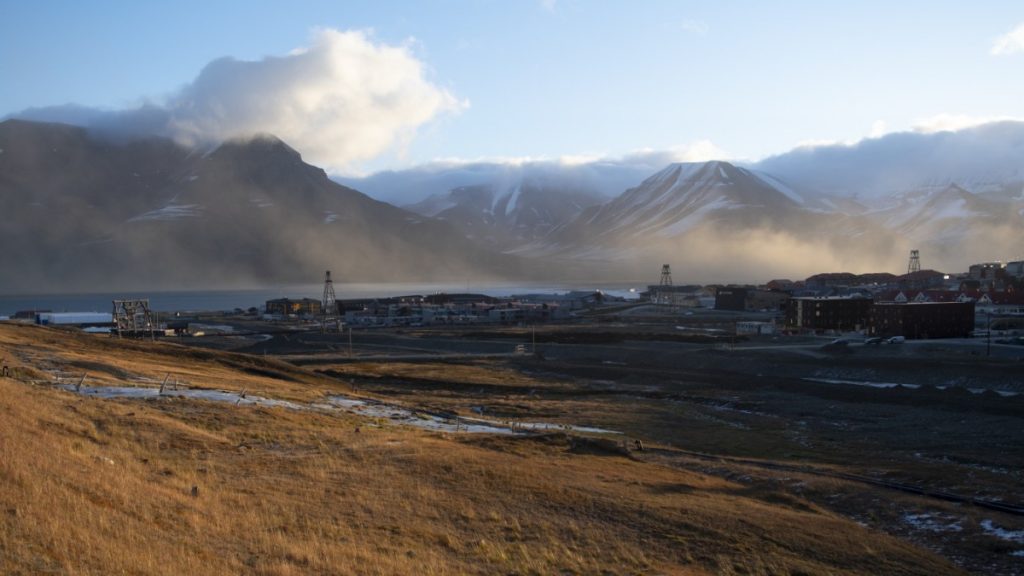As Line Nagell Ylvisåker in 2006 for the newspaper SvalbardPosten Started, this was the warmest year ever in Svalbard. Svalbard, a remote archipelago in the Arctic sea, roughly 1,000 kilometers from mainland Norway, has been the home of journalists for more than 15 years. Here she gave birth to two children and built a yellow house with her husband Trond. Their home is located in Longyearbyen, the largest city in Svalbard with a population of over 2,000. A home that today the family themselves are lucky enough to exist: out of the danger zone.
On December 19, 2015, an avalanche destroyed a residential property in Longyearbyen, killing two people, including a young girl who had gone to kindergarten with Ylvisåker’s daughter. The following fall, after unusually warm rainy days, several landslides occurred, and the following winter an avalanche destroyed the last apartment building in Longyearbyen. It gets warmer and wetter in Svalbard, in an area that is actually a cold Arctic desert, where it’s usually too dry for homes here to have rain gutters.
Where entire fjords used to freeze in the always dark polar winter, ships now sail all year round
In Svalbard, global climate trends are in rapid motion. While the global temperature has risen by 0.9 degrees since 1961, it has risen 5.6 degrees in Svalbard, writes Line Elvisacker. Where entire fjords once froze in the always-dark polar winter, making them fit for residents’ snowmobiles, the ships are now in service all year round. Where Ylvisåker used to feel safe in this unreal place far north of the Arctic Circle, she is now very anxious.
My World Is Melting begins unintentionally, as a discovery made by an anxious resident. She meets a disturbed climate researcher and a climate-change skeptic hunter who has already spent 40 secluded winter stays in the Svalbard wilderness. She brings her children to the safety of polar bears on a family picnic, collects fossils documenting Svalbard’s changing climatic history, vomits on board a research vessel and participates in a solemn celebration in the seed vault of Svalbard. Just like the apartment complexes on Svalbard, the world’s largest seed bunker must be protected from the now-melting permafrost.
One likes to follow Ylvisåker in the Arctic, in his explanations of what thawing sea ice in Svalbard could mean for the world’s climate, which could lead to uncontrollable processes due to dwindling ice on the polar caps. “My World Is Melting” is a useful and compelling story about the climate crisis. At the same time, Ylvisåker tells about the beauty of Svalbard, about life on the edge of the world, about a place where nature shows itself in all its supremacy.
Line Nagell Ylvisåker: My world is melting. Hoffman and Camp. Hamburg, 2021. 192 pages, €22.
In the middle of the book, former frequent flyer Ylvisåker is forgiven for a trip to Cape Verde in conversation with a meteorologist. She had booked a vacation against vitamin D deficiency in the polar winter for the family. The meteorologist takes it easy, and says you have to find a solution to the climate problem that doesn’t make you feel guilty all the time. It is not known if Ylvisåker will take the trip. In the end, she at least sells her Toyota Yaris, which she previously drove across the island.
Some apartment complexes in Longyearbyen have now been permanently evacuated, and others have been secured against avalanches with four-meter-high snow fences made of galvanized steel. The seed vault was reinforced with concrete to protect it from melt water. The heat record for 2006 has long been broken, in 2016 the temperature in Svalbard was well above the recorded annual average, by 6.6 degrees.
The Spitsbergen where Ylvisåker’s grandchildren will live or visit will look different. Winter days are less pink and purple, and more dangerously dark wet autumn. Perhaps trees are growing again in Svalbard, as they did millions of years ago. I wrote, ‘The North Pole probably won’t exist anymore.

“Explorer. Communicator. Music geek. Web buff. Social media nerd. Food fanatic.”







More Stories
A fossilized creature may explain a puzzling drawing on a rock wall.
MrBeast Sued Over ‘Unsafe Environment’ on Upcoming Amazon Reality Show | US TV
Watch comets Lemmon and SWAN approach Earth today